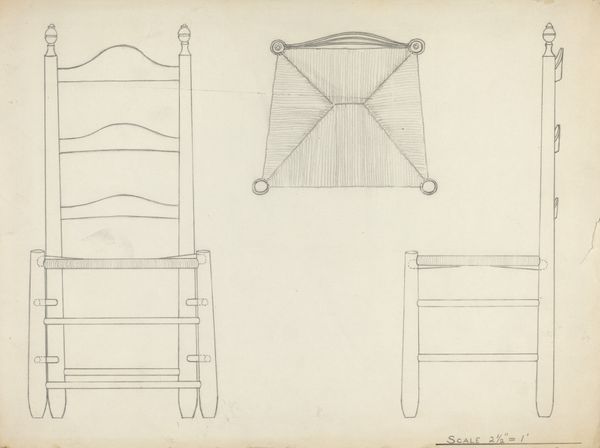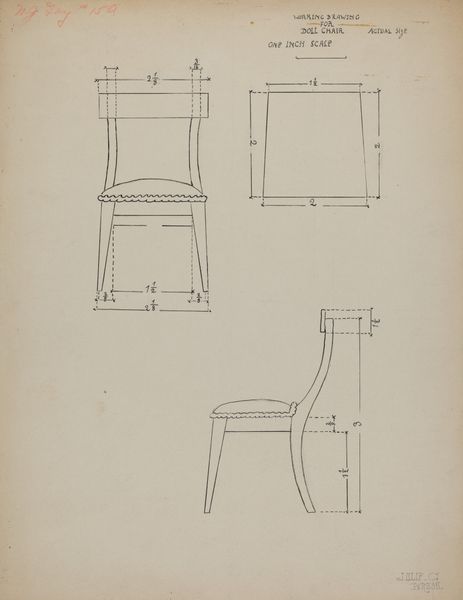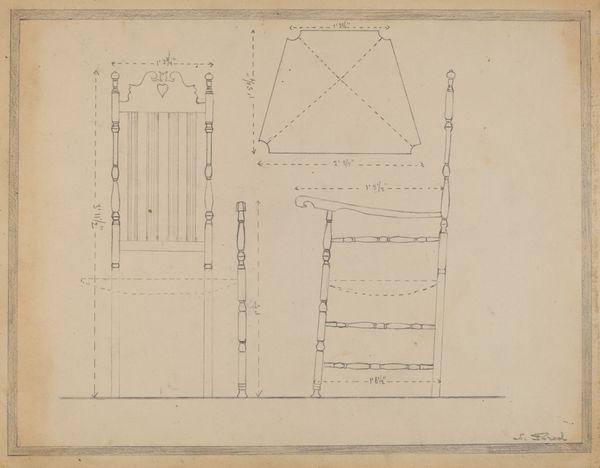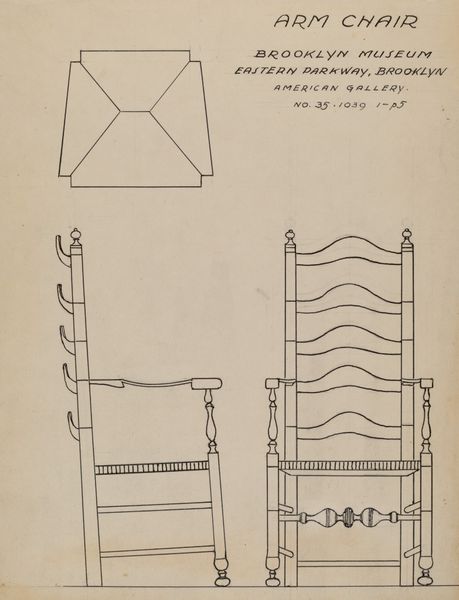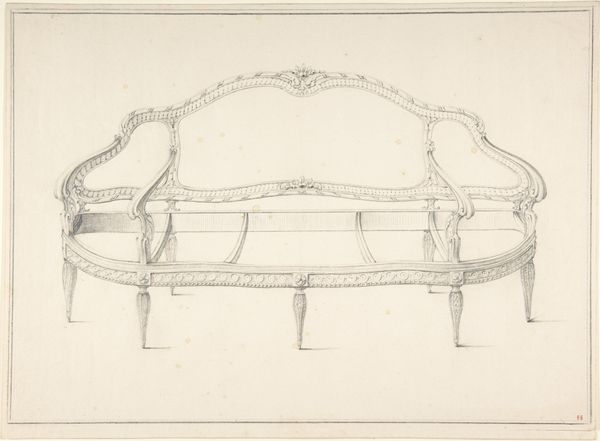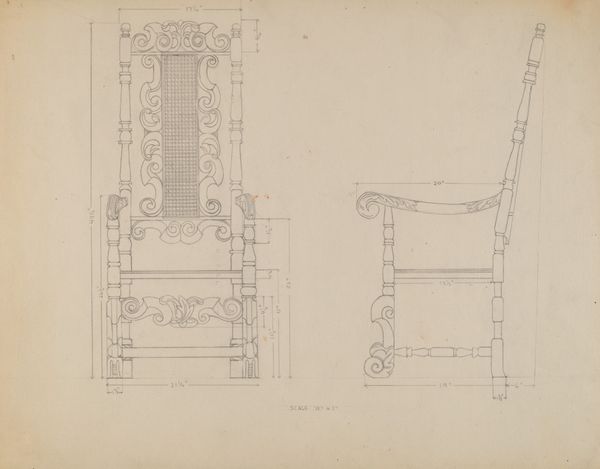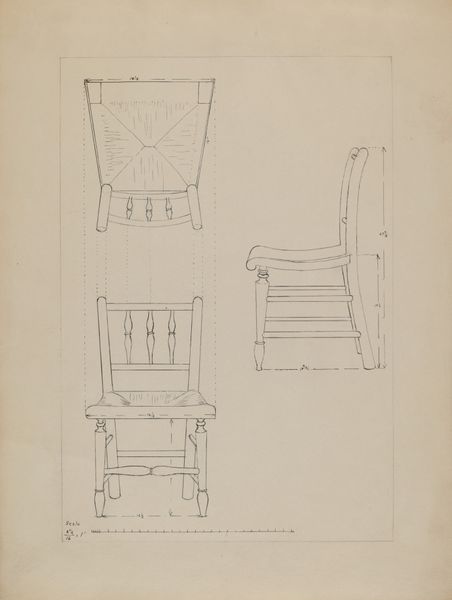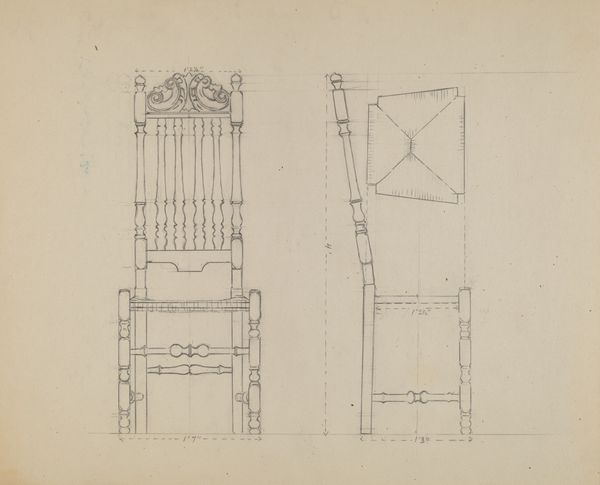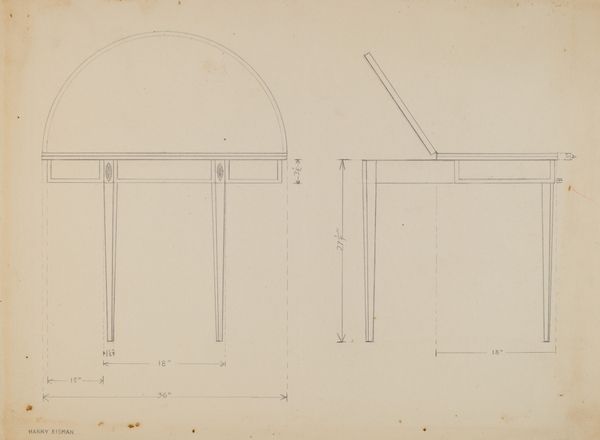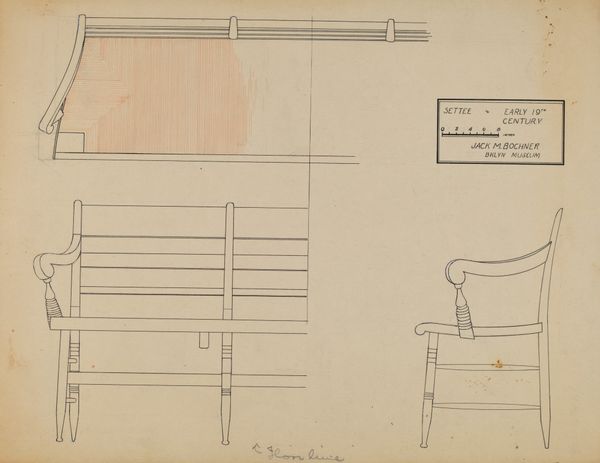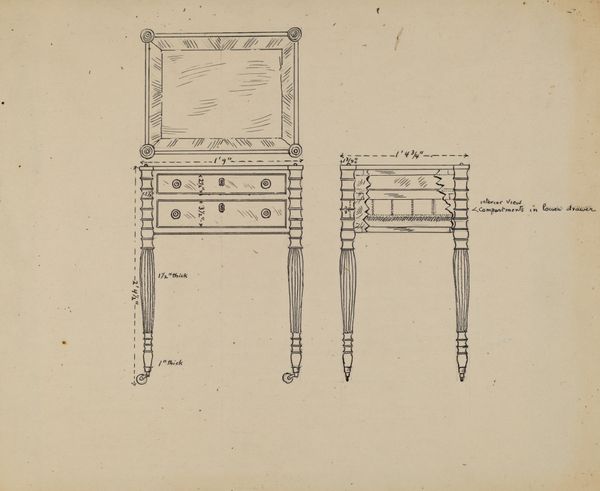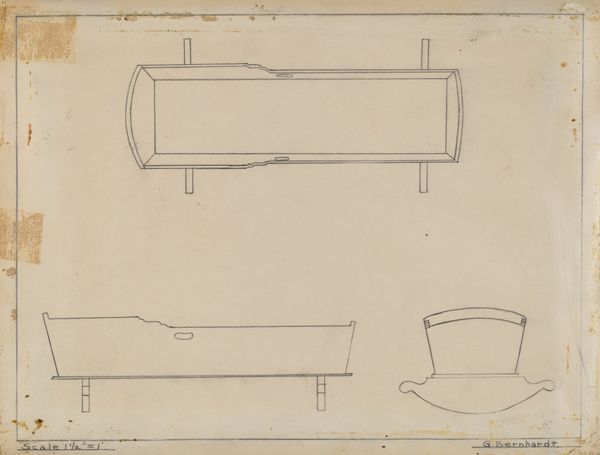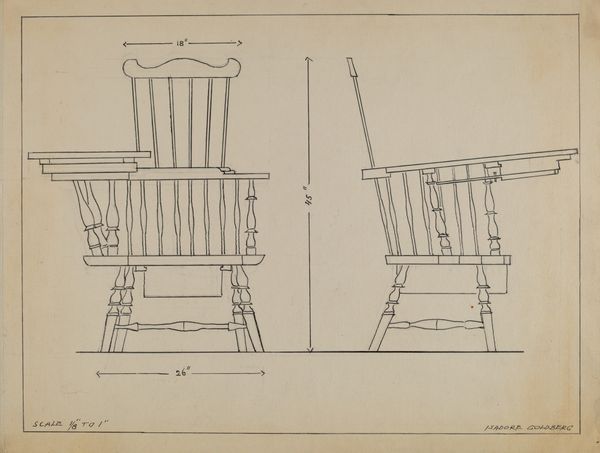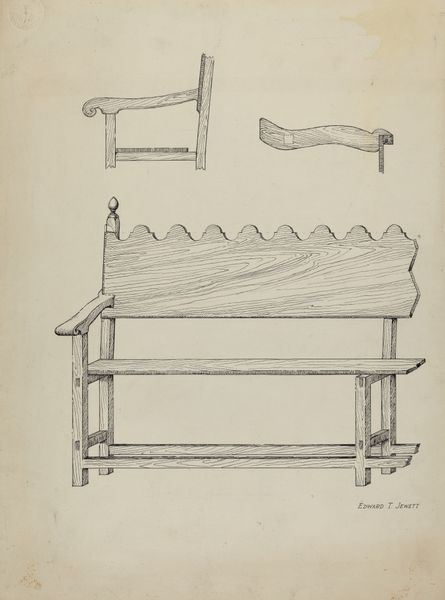
drawing, paper, pencil
#
drawing
#
paper
#
geometric
#
pencil
Dimensions: overall: 22.9 x 30.7 cm (9 x 12 1/16 in.)
Copyright: National Gallery of Art: CC0 1.0
Curator: Here we have Gerald Bernhardt's drawing, "Chair," created between 1935 and 1942, rendered in pencil on paper. What's your first take? Editor: Well, immediately I'm struck by the precision. It feels quite technical, almost like an architectural blueprint, yet the chair design itself possesses a sort of antiquated charm. Curator: Precisely. Let's consider the materials used. Pencil on paper lends itself to accessible reproduction. This suggests a potential democratization of design, where intricate craftwork is documented and disseminated widely. Think of the Arts and Crafts movement, or even vernacular furniture design across the rural landscape. Editor: I find myself wondering about the intended user. The high back suggests a formal setting, perhaps a place of authority, but the woven seat brings in a touch of the domestic. This tension perhaps reflects societal shifts in the early to mid-20th century. There's something unsettling about the rigidity imposed over, perhaps, the artisan. Curator: And we see this reflected, perhaps unintentionally, in the scale notations scribbled at the bottom corner of the drawing: a focus on practical application, utility and production quotas trumping perhaps aesthetic considerations. It tells the tale of a shifting world. Editor: I also find myself questioning if this relates to gender roles. The traditionally masculine task of drawing and design showcasing an object tied to domestic, arguably feminine labor. Curator: That’s astute! It really makes you wonder if Bernhardt intended us to question these dynamics by drawing the unseen craftswomen of his era and illustrating the nuances and exploitation inherent to capitalist production models? Editor: So it becomes not just about a chair, but about who gets to sit, who makes the sitting possible, and the visual language employed in the production of commodity objects in America during the lead up to the Second World War. Curator: Indeed, viewing the piece in terms of accessibility, combined with the gendered and classed history that informed chair design. It makes for an excellent overview that draws in seemingly disparate areas of American visual and material culture. Editor: Absolutely, and hopefully, by unpacking some of this information, listeners better understand not just one specific object, but a broader swath of twentieth century material conditions.
Comments
No comments
Be the first to comment and join the conversation on the ultimate creative platform.
